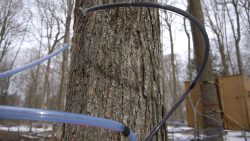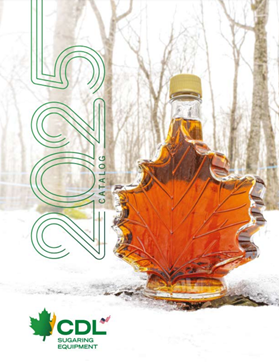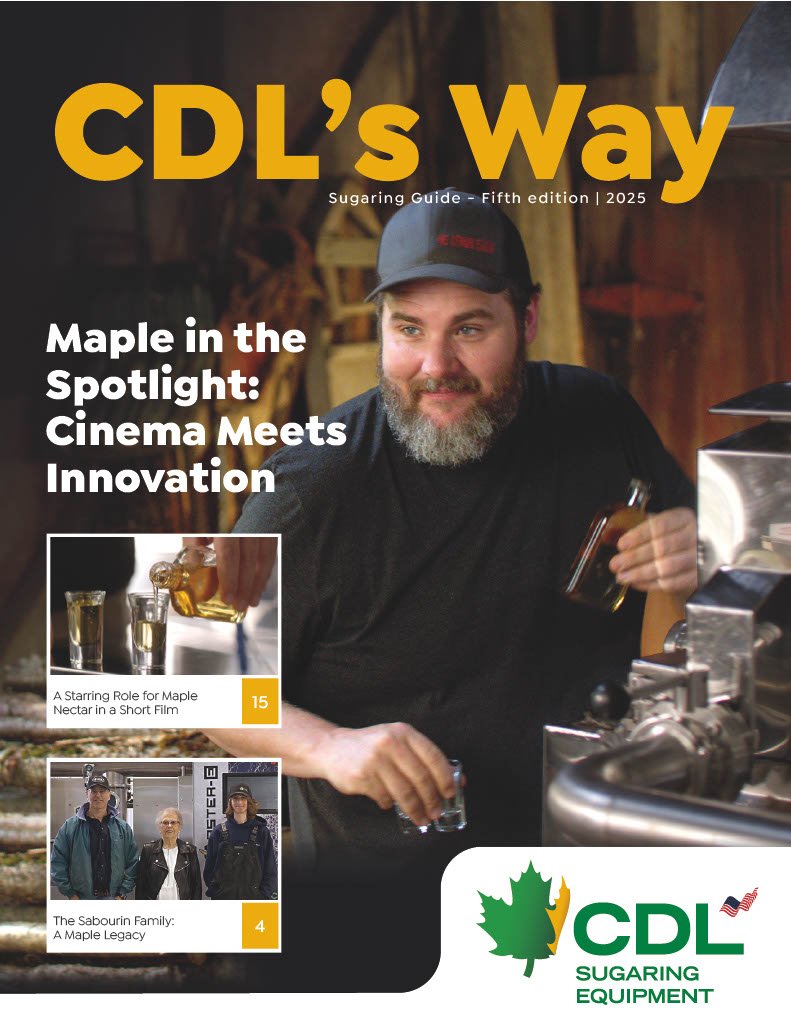RESEARCH ON THE EFFECT OF TUBING COLOUR ON MAPLE SAP HARVESTING
COLLABORATION BETWEEN CDL MAPLE SUGARING EQUIPMENT AND THE CENTRE ACER
DESCRIPTION OF THE PROJECT
Preliminary results from the Centre ACER and other research groups suggest that the colour of the materials used to collect maple sap could affect the volumes of sap collected and, consequently, sugar bush productivity. To date, studies have focused mainly on spout colour, but very little information has been collected on the effects of tubing colour. In all cases, dark colours are associated with greater absorption of the sun’s radiation and therefore increase the materials’ temperature. This increase in temperature for dark materials could explain certain differences in the performance of sap collection systems—in this case, on the volumes of sap collected. Currently, sap collection tubing, especially lateral tubing (5/16”), is available in different colours (or tints) ranging from blue to green, and sometimes even purple or translucent.

Matched spouts, one under blue tubing, the other under gray tubing, fitted with temperature sensors.
The proposed research project therefore aims to analyze and compare the performance of collection systems equipped with blue and ash grey tubing (shadow grey). Research is being done at the Centre ACER sugar bush in Saint-Norbert-d’Arthabaska, in the Centre-du-Québec region. This sugar bush is characterized by its low slope and its sugar maples with a relatively high average diameter at breast height (DBH). The experimental design consists essentially of comparing different coloured tubing systems (blue and grey), tapped the same way and run parallel to one another while keeping a minimum distance between each tap. This will allow for good comparison of both tubing colours while minimizing other effects on the flow. The systems are also equipped with temperature (outdoor and surface) and vacuum sensors as well as calibrated water meters to obtain accurate performance data. Along with system monitoring, a sampling plan has been developed to determine the impact on sap quality by measuring the microbial load on the surfaces of the systems and the sap during the season, as well as to evaluate the degradation of sugars in the sap collected from these two types of tubing. The results of this research will make it possible to evaluate and compare the performances obtained from tubing of different colours and perhaps to explain, at least in part, the root cause of the differences measured and thus provide relevant information on the effect of tubing colour in order to better guide maple syrup producers in their choice of materials.
At the time of writing, the results were still being analyzed. Keep an eye out for my second article on the project in the next issue of CDL’s Way.



